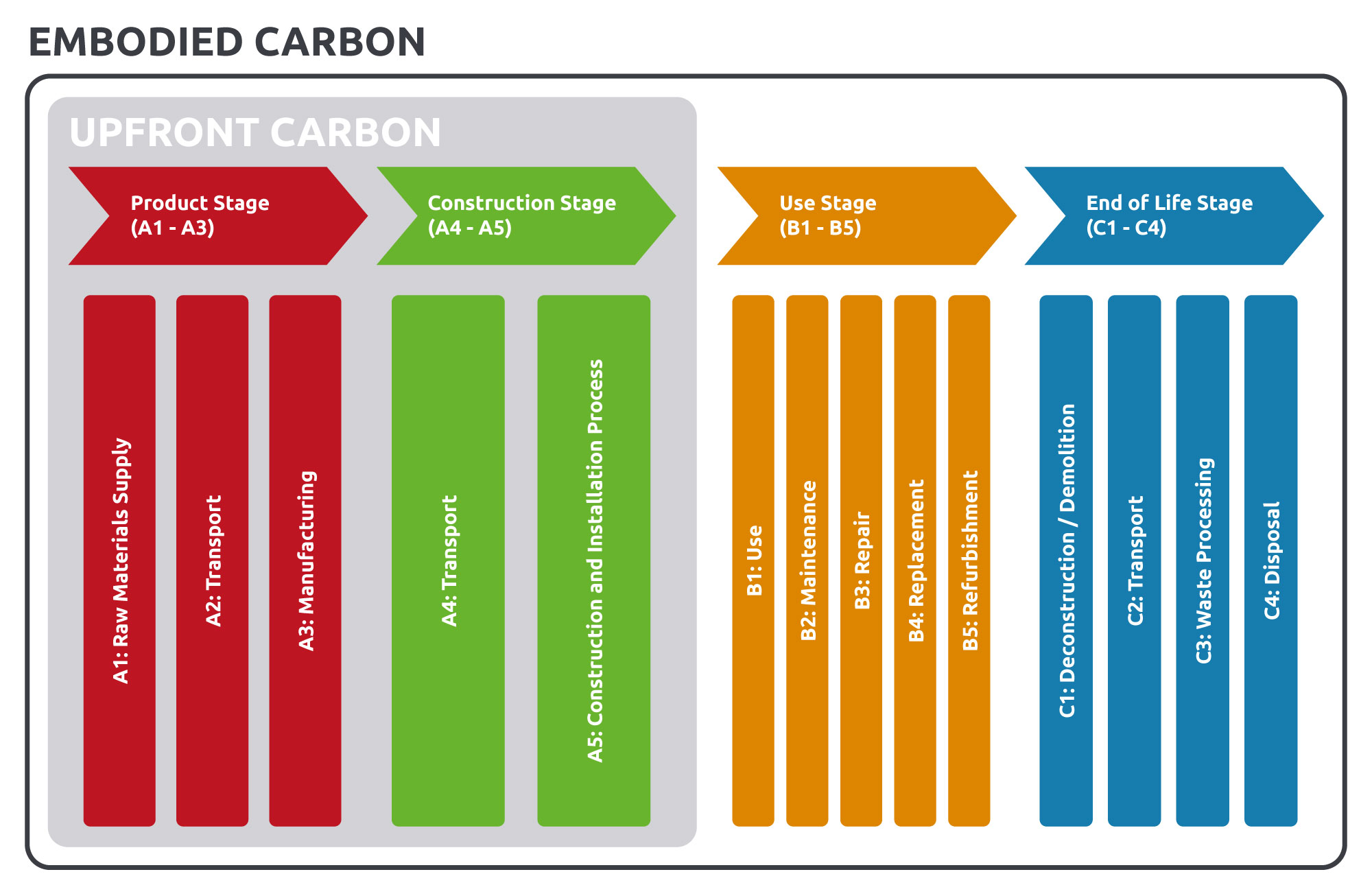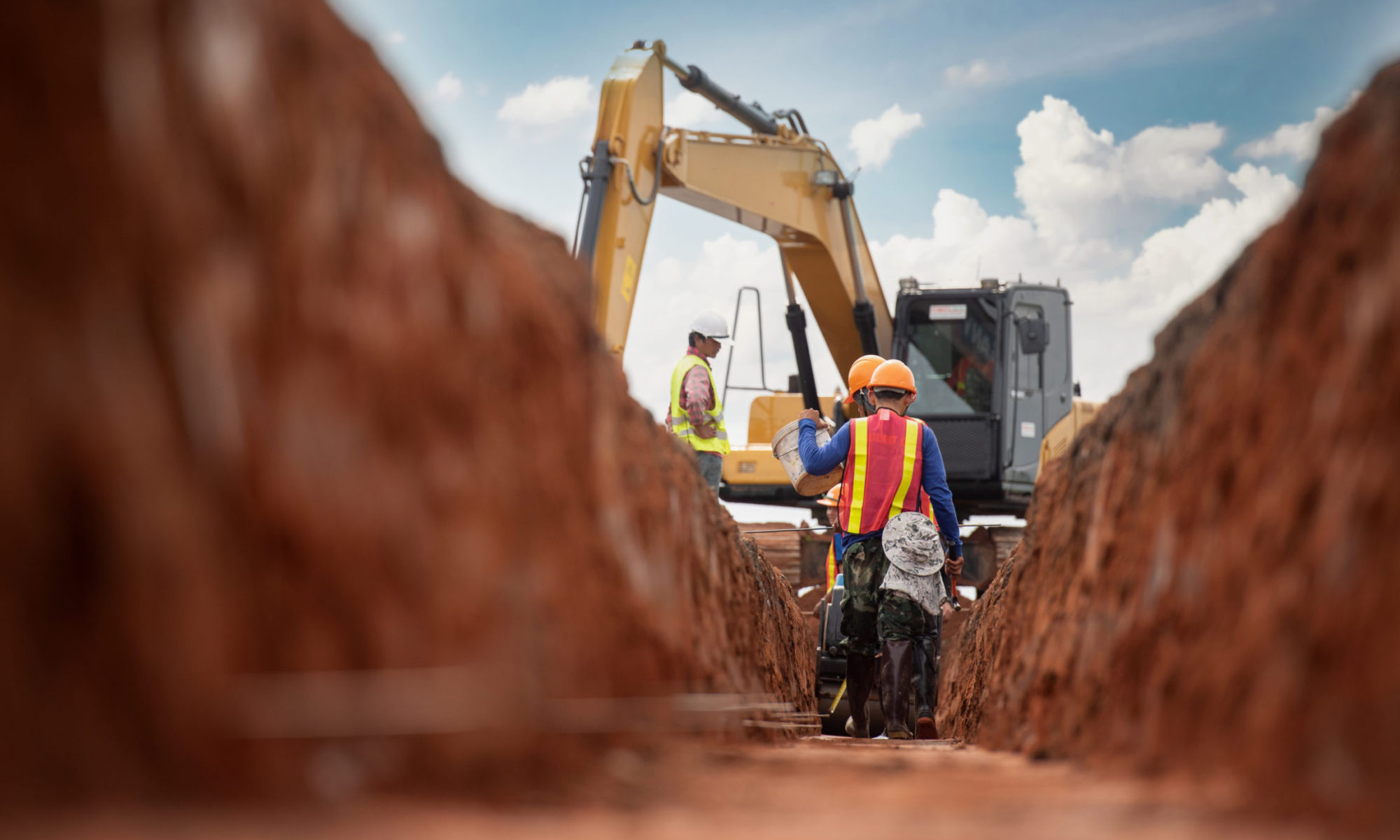What is embodied carbon?
Embodied carbon is the total amount of carbon associated with an entire life span of a material or product, from extraction and manufacture up to end-of-life.
Why is embodied carbon important?
Embodied carbon is expected to account for nearly 50% of a new construction’s carbon footprint by 2050. The UK Government has committed to achieve Net Zero Carbon by 2050; the challenge is how do we get there?
Monitoring the embodied carbon in a project can:
- Identify carbon hotspots in projects, choosing alternate materials as a result
- Deter absolute end-of-life strategies for more environmentally friendly solutions
- Promote resource and cost savings by encouraging reuse and recycling of materials
How do we measure embodied carbon?
Embodied carbon can be split in four primary stages: Product Stage, Construction Stage, Use Stage, and End-of-Life Stage. Every material has an embodied carbon conversion factor (as found in carbon life cycle inventory datasets), these are multiplied by the material’s quantity to give respective values of embodied carbon.
Environmental product declarations (EPDs) provide a more accurate estimation of the embodied carbon, as provided by the manufacturer.

Embodied carbon vs upfront carbon
Upfront carbon refers to the carbon associated with a product from raw material extraction up to construction / installation.


